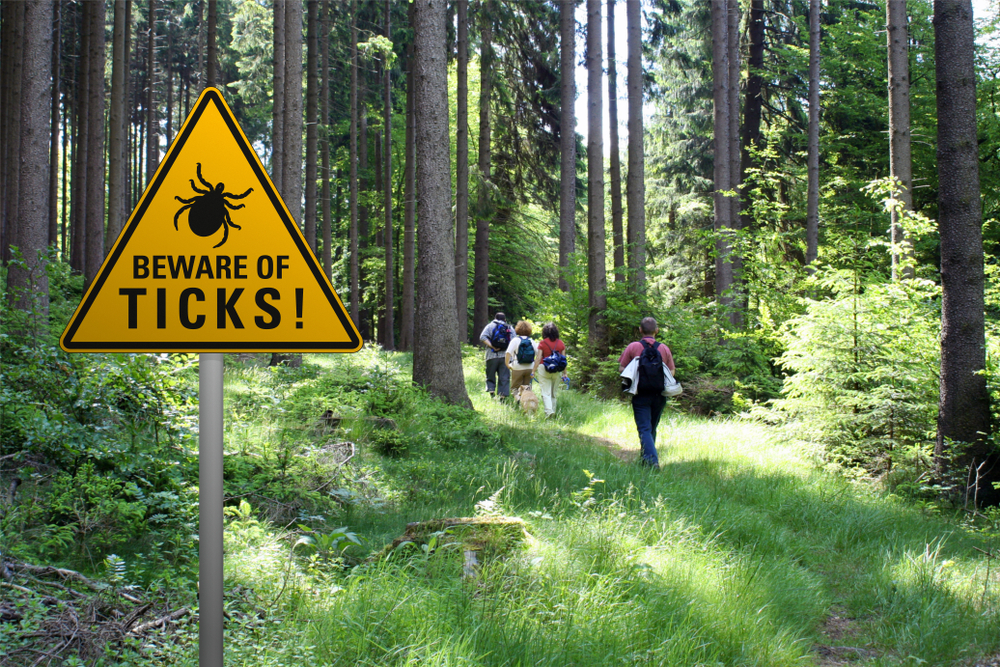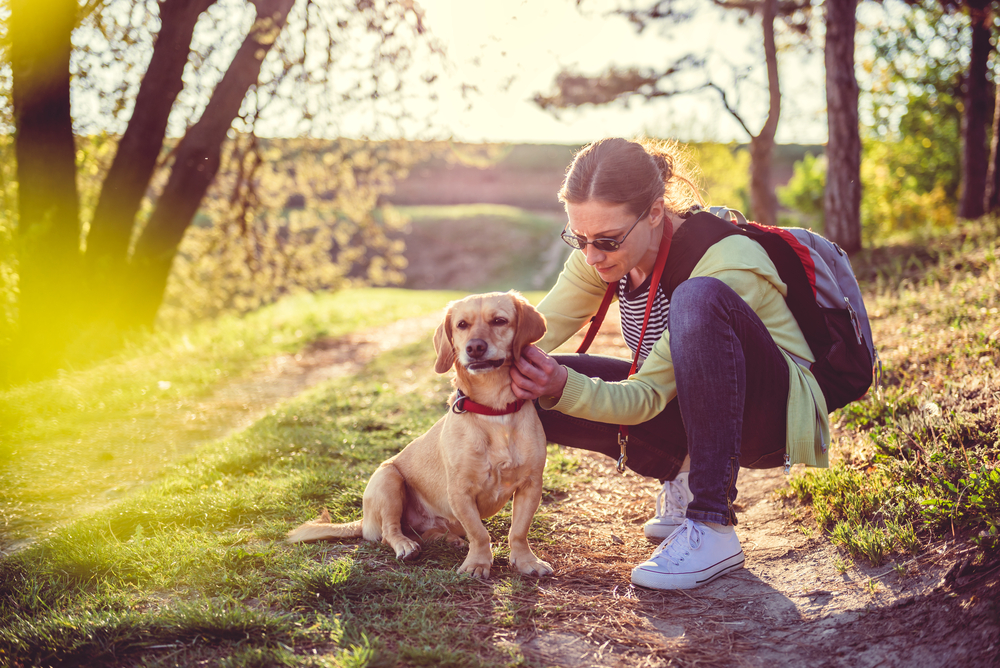Embrace the Future of Pet Safety
Ticks And Designer Dog Breeds
Designer Dog Breeds with Curly Coats Face Higher Risk of Tick Infestation, Royal Veterinary College (RVC) Finds
STORY
The curse of the curly coats
In recent years, there has been a rise in popularity of designer dog breeds – dogs resulting from the intentional crossbreeding of two purebred dogs. Designer dog breeds often have unique and desirable characteristics such as hypoallergenic coats or specific temperaments. However, new research from the Royal Veterinary College (RVC) reveals that designer cross breeds, such as Cavapoos, Cockapoos, Goldendoodles, and Cavachons, have a higher risk of tick infestation due to their Poodle parentage. The study found that Standard Poodles are the second most likely breed to be infested by ticks, suggesting that their curly coats are highly attractive to these parasites. This information is crucial for dog owners, breeders, and vets to understand why some dogs are more prone to ticks and how to prevent infestations.
Key Findings from the VetCompass Study
The RVC’s VetCompass study analysed anonymous veterinary health records from over 900,000 dogs in the UK over five years. Almost 2,000 cases of tick infestation were identified, showing that 2% of dogs had at least one tick infestation during this period.
Researchers looked into various risk factors to understand why some dogs are more prone to tick infestations. These factors included ear shape, coat type, skull shape, body weight, breed, age, and sex.
Why designer breeds are at risk
Designer dog breeds—like Labradoodles (a cross between a Labrador Retriever and a Poodle)—have become increasingly popular. Many people choose these breeds for their non-shedding coats, which are thought to be less allergenic. However, the RVC’s study highlights a significant downside to owning dogs with curly, Poodle-type coats: a higher risk of tick infestation.
Breeds and risk factor

Breeds at Higher Risk
The study found that both new designer breeds and some established breeds are at high risk of tick infestation. These breeds include:
- Cairn Terrier
- Standard Poodle
- Parson Russell Terrier
- Golden Retriever
- Miniature Schnauzer

Breeds at Lower Risk
Conversely, the breeds with the lowest risk of tick infestation include:
- Staffordshire Bull Terrier
- Rottweiler
- Chihuahua
- English Bulldog

Other Risk Factors
- Male dogs have a 1.24 times higher risk compared to females.
- Dogs with medium-length coats are 2.20 times more at risk.
- Dogs with V-shaped drop or long, floppy ears have a 1.23 times higher risk.
What You Need to Know About Ticks
Ticks are parasites that attach to the skin and feed on blood for up to a week before dropping off. They can transmit serious diseases and are typically found in woodland and grassland areas. However, urbanisation, climate change, increased pet importation, and closer interactions between humans, pets, and wildlife have expanded the areas where ticks are found, increasing the risk of infestation and disease transmission.
Despite these risks, few studies have previously explored the frequency and risk factors for tick infestation in UK dogs. The RVC’s findings aim to fill this gap and offer valuable insights for better prevention and management.
How to Protect Your Dog
- Regularly check your dog for ticks, especially if they have a curly or medium-length coat.
- Use tick prevention products recommended by your vet.
- Keep your dog away from high-risk areas like dense woods and tall grass.
Understanding these risks and taking preventive measures can help keep your dog safe from ticks and the diseases they carry.
For more detailed information and advice, consider consulting with your veterinarian.

Tick Talk, what are they?
Ticks are arachnids with eight legs that feed on the blood of humans and animals by biting through their skin. These tiny creatures can vary greatly in size, especially before and after feeding.
Species and Size Variations
In the UK, there are several species of ticks, each differing in size. When a tick first attaches to your dog, it’s typically only as small as a sesame seed. However, after feeding, it can balloon up to 200 times its original size, reaching dimensions similar to a coffee bean.
Tick Management
Knowing how to check our dogs for ticks and what to look for in a tick treatment before using the treatment regularly helps us keep our dogs safer from these parasites and the diseases they can transmit.
When should you seek Veterinary help?
Observe Your Dog’s Behaviour following tick removal.
- Monitor for signs of infection
- Monitor your dog for any changes in behaviour or health.
- If you notice anything unusual, consult your vet immediately.
Step by step tick removal
1. Don’t Panic
If you discover a tick on your dog, remain calm. Avoid the urge to just pull it off, burn it, or cut it. Improper removal can leave parts of the tick embedded in the skin, leading to infections.
2. Gather Your Tools
The best tool for removing a tick is a tick hook, which is both inexpensive and invaluable. These tools have a hook or scoop with a narrow slot designed to trap the tick’s mouthpiece without squashing its body.
3. Position the Tool
- Slide the tick hook between the tick’s body and your dog’s skin.
- Ensure that all fur is out of the way to give you a clear view and access to the tick.
4. Remove the Tick
- Gently rotate the tick hook until the tick comes loose.
- Avoid pulling or jerking, as this might leave parts of the tick behind.
5. Dispose of the Tick
- Safely dispose of the tick by placing it in a sealed bag or container.
- Handle the tick with gloves to avoid any potential contamination.
Aftercare
Clean the Affected Area
- Clean the bite area with antiseptic or rubbing alcohol to prevent infection.
- Ensure all cleaning agents are pet-safe and appropriate for use on your dog.
Monitor for Signs of Infection
- Keep an eye on the bite area for any redness, swelling, or discharge.
- Over the next few weeks, watch for flu-like symptoms in your dog, including loss of appetite, fever, or lethargy, which could indicate a tick-borne disease.
Observe Your Dog’s Behaviour
- Monitor your dog for any changes in behaviour or health.
- If you notice anything unusual, consult your vet immediately.
By following these steps, you can ensure that ticks are removed safely and your dog remains healthy. Remember, prevention is always better than cure, so consider using tick preventatives and regularly check your dog for ticks, especially after walks in wooded areas.
As responsible pet owners, it is our responsibility to take proactive measures in protecting our furry companions from tick infestations and other potential health hazards. So before adding a curly-coated designer dog breed to your family, make sure you are prepared to provide them with the extra care and attention they may need. So, it is always better to be safe than sorry when it comes to our pets’ health and well-being. Therefore, by being aware of the risks and taking preventative measures, we can ensure that our curly-coated designer dogs live happy and healthy lives.
Getting Started With Your Own Brand
BRAND CREATION Excited about the potential of custom-branded products but not sure where to start? Here's a simplified...
Brand Creation With Ecohound
BRAND CREATION Key Reasons You Need Custom Brand Dog Waste Bags For Your Pet Supplies Business Customisation has...
Understanding the New Pet Microchipping Reforms
With the recent overhaul of the UK's pet microchipping system, it's crucial for every pet owner to understand and...




